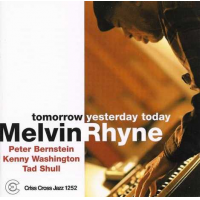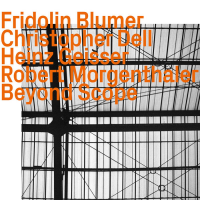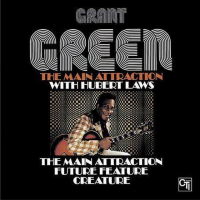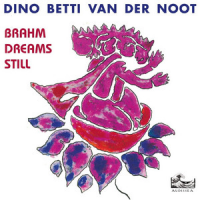Home » Jazz Articles » Liner Notes » Hal Galper Trio: Trip the Light Fantastic
Hal Galper Trio: Trip the Light Fantastic
Some veteran jazz musicians get to a point where they find a style and don't stray far from it, stick to a set repertoire and play it in an accomplished, though predictable manner. That's not for Hal Galper, who has the heart of an explorer and the insight to make even familiar songs sound fresh to seasoned ears every time. The pianist has long proved himself as an innovative composer as well, in addition to his brilliant work as a sideman with Chet Baker, Sam Rivers, Cannonball Adderley, Lee Konitz and especially his decade with Phil Woods.
Yet Galper was not satisfied with being a top bop pianist. He explained to me in a 2011 interview: "The reason I started the trio was to create a laboratory for myself to find out how I wanted to play. I had so many influences over the years, I could play like anybody, imitate anybody and have fun doing it. The audience would like it and it was a real problem for me."
So Galper broke up his group in 2000 and experimented over a several year stretch. "I felt that I needed to get to another technical level, so I 'got in the shed,' doing very heavy practicing. I usually found every way of avoiding it all day long until 11:30 pm, then I'd go to the piano. This sort of crept out, I didn't plan it and I thought this feels really right, really good. I had no idea what it was, but felt that I'd never find anybody to play this with." Over time, Galper transformed himself by adapting his playing style, strictly focusing on playing rubato, a method of bending and shaping tempo, harmony and melody in a way to create new possibilities as his trio collectively improvised.
Yet the seed had been planted long ago, as the pianist recalled, "I was kind of surprised at my direction, so I went over my recordings to do a retrospective and I noticed how often I would go into that mode for short periods, but I used it judiciously. I'd suddenly break into rubato playing in the middle of a solo. It's been there all the time and kept developing, but I never focused on it. When I realized I had been doing that all those years, it gave me a sense of confidence that I didn't have before."
He initially hired bassist Tony Marino and drummer Billy Mintz to play his new style, recording the CD Agents of Change. Galper soon reunited with Jeff Johnson (the pianist's regular bassist for seven years during the 1990s), who recommended drummer John Bishop.
It's easy to hear the enthusiasm in Hal's voice about playing with Jeff and John. "When I started the trio again a few years ago, Jeff and John had been playing together for twenty years, so they were well mated. But John had never played this way before, it opened up something new for him that he's really excited about and wants to follow now, because he's a total professional musician who's played it all. I've been listening to John and I have no idea what he's doing or how he does it. They read each other so well, you want a rhythm section that's got magic. The mind reading that goes on when we're playing is just phenomenal. Jeff is always a sixteenth note behind me, it's almost like he knows what I'm going to play next. John has got a style that no else can play in, the only one close was Rashied Ali. Miles Davis' secret wasn't picking instruments, it was picking personalities, characters that produced the magic. So I've taken my cue from him. Plus it's not fun doing unless it's magic. We're always surprised playing rubato about what comes next, we're not playing with intention, we've taken the ego out of the equation and letting it take us where it wants to go."
One can hear what Hal is talking about in the trio's breezy setting of the popular standard "Alice in Wonderland," which is typically played as a subdued waltz tempo. The melancholy "I Guess I'll Hang My Tears Out to Dry" has long been a favorite of vocalists. Galper's solo introduction seems conventional, but as Johnson joins him, their elastic approach to rhythm takes shape, keeping the listener off balance. Galper previously recorded Ron Miller's "Babes of Cancun" with a quintet, but his new trio interpretation of this lush ballad adds a degree of mystery with Bishop's off-center whispering brushes. "Be My Love," written for Mario Lanza to sing in a film, is an inspired choice, as the piece has only been sporadically recorded in jazz. The trio's explosive performance takes the song far from its original context.
Galper's originals prove to be just as compelling launch pads for the trio's explorations. The brief, jagged theme of "Suspension" inspires each musician to focus on an individual rhythmic attack, with the music coming in waves as they intuitively react to one another's playing. The brisk, angular "Get Up and Go" is an intriguing blend of avant-garde and post-bop, though the rubato style is very much present throughout this whirlwind performance. The pianist's "Trip the Light Fantastic" is a deliciously loopy waltz that would throw off anyone trying to dance to it.
Hal Galper is very pleased with his trio's work, commenting, "Since I've gotten into this rubato style of playing, I feel like I'm peaking and the best I've ever been, so the impulse to get out and play is even stronger. The music is taking us on its own somewhere. Every time we play together it is revelatory. When a lot of people first hear it, they don't know what to make of it. So when we play two sets, we open the floor to audience questions, because they don't know how to listen to this music. That's always a lot of fun and the audience appreciates our being in contact with them and not keeping separate from them. Then they really get it during the second set."
Liner Notes copyright © 2026 Ken Dryden.
Trip the Light Fantastic can be purchased here.
Contact Ken Dryden at All About Jazz.
Ken began collecting jazz in 1972 and has been a jazz journalist since 1988.
Track Listing
Alice in Wonderland; Babes of Cancun; Get Up & Go; Guess I'll Hang My Tears Out to Dry; Suspension; Trip the Light Fantastic; Be My Love.
Personnel
Album information
Title: Trip the Light Fantastic | Year Released: 2011 | Record Label: Origin Records
Tags
PREVIOUS / NEXT
Support All About Jazz
 All About Jazz has been a pillar of jazz since 1995, championing it as an art form and, more importantly, supporting the musicians who make it. Our enduring commitment has made "AAJ" one of the most culturally important websites of its kind, read by hundreds of thousands of fans, musicians and industry figures every month.
All About Jazz has been a pillar of jazz since 1995, championing it as an art form and, more importantly, supporting the musicians who make it. Our enduring commitment has made "AAJ" one of the most culturally important websites of its kind, read by hundreds of thousands of fans, musicians and industry figures every month.























